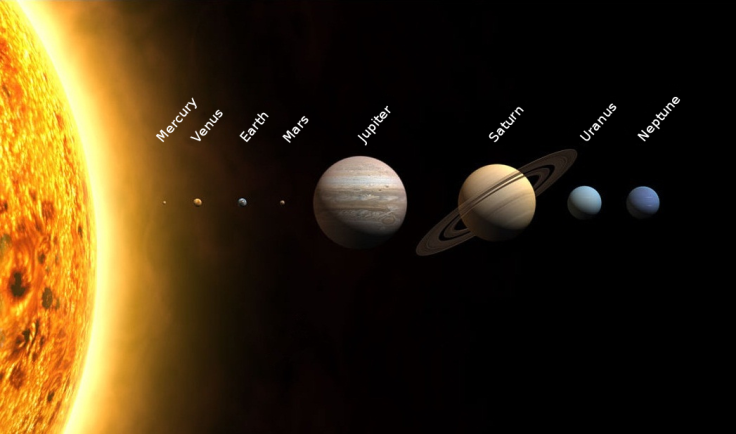Follow astronaut Chris Hadfield on a journey through the Solar System in new documentary
The film, Miniverse, scales down the Solar System to the size of the US.
The Solar System exerts a strong fascination on people of all age, but its size and complexity mean that we often fail to grasp what space exploration is really like. A new CuriosityStream documentary, Miniverse, brings the planets closer, taking viewers on a long journey throughout the US to discover them.
The film features Canadian astronaut Colonel Chris Hadfield – who rose to international fame when he performed a version of David Bowie's Space Oddity from the International Space Station – as he embarks on a road trip from New York to California, in an effort to simulate a journey across the Solar System. The 3-billion mile-wide Solar System is brought down to 1:10 million-mile scale, as he travels from one coast of the US to the next, as if he was going from the Sun to Pluto.

The Sun and all the planets are represented in the film with stunning imagery, hanging over some of the US main cities and accompanying Hadfield on his trip. Viewers will be able to see a representation of the sun over Long Island, Mars over New York's Freedom Tower, and Jupiter over the Lincoln Memorial in Washington.
On his journey, Hadfield meets with some of the world's most renowned space experts. Together, they discuss some of the most important questions that scientists still have regarding the different planets in the Solar System.
Dr Laura Danly, curator at the Griffith Observatory in Los Angeles, who took part in the film alongside Hadfield told IBTimes UK: "The purpose of the film was to bring the solar system a little bit closer to everyday experiences. I think a lot of people don't fully appreciate the extraordinary distances to the outer Solar System. Even the distances to the nearest planet in the solar system, Mars, are vast and take months and months to cover with our best rockets. Distances to rest of the solar system are very hard to convey to normal audiences".
Exploring the mysterious ice giants
While all the planets of the Solar System are discussed in details in the film, perhaps the most interesting part for viewers will be the one focusing on those planets that lie further away from the Sun – Uranus, Neptune and Pluto – and which are in many ways very mysterious.
For the last leg of the journey, Hadfield shares his car with Danly, as they go on an exploration of the outer Solar System. The pair exchanged many ideas about Uranus, Neptune and their Moons – even discussing the exciting possibility of finding life outside of Earth.
Uranus and Neptune are ice giants. They are enormous planets, very different to our world, and they have multiple, very interesting Moons.
"Unlike planets in the inner solar system, these planets have dozens and dozens of Moons and some could possibly support life. Scientists are now very engaged with the idea of habitability of a planet, or a Moon, meaning does it have the right conditions for life, is there an energy source that can power the energy of life, some liquid that can transport food and flush away waste, and the right ingredients. Many moons out there may meet those criteria which is astonishing. We spent a lot of time in the film talking about that too", Danly said.
The film is out on CuriosityStream's platform on 20 April 2017.
© Copyright IBTimes 2025. All rights reserved.






















